Front Wheel Hub, Bearing, and Seal Replacement RWD
Removal Procedure
Tools Required
J 29117-A Wheel Bearing Cup Remover
- Raise the vehicle. Support the vehicle with safety stands.
- Remove the brake caliper. Refer to Brake Caliper Replacement in Disc Brakes.
- Remove the cap from the rotor.
- Remove the cotter pin, the nut, and the washer.
- Remove the rotor from the spindle.
- Remove the outer bearing.
- Remove the seal. Pry the seal out and discard the seal.
- Remove the inner bearing. Use the J 29117-A .
- Clean all of the parts in a solvent, then air dry. Do not spin the bearings with compressed air.
- Make sure all of the parts are clean and free of grease.
- Inspect the rotor. Refer to Brake Rotor Thickness Variation Check or Brake Rotor Lateral Runout Check or Brake Rotor Tolerance in Disc Brakes.
- Inspect the bearings and the races for wear or damage. Refer to Wheel Bearings Diagnosis in Suspension General Diagnosis.
Notice: Support the caliper with a piece of wire to prevent damage to the brake line.
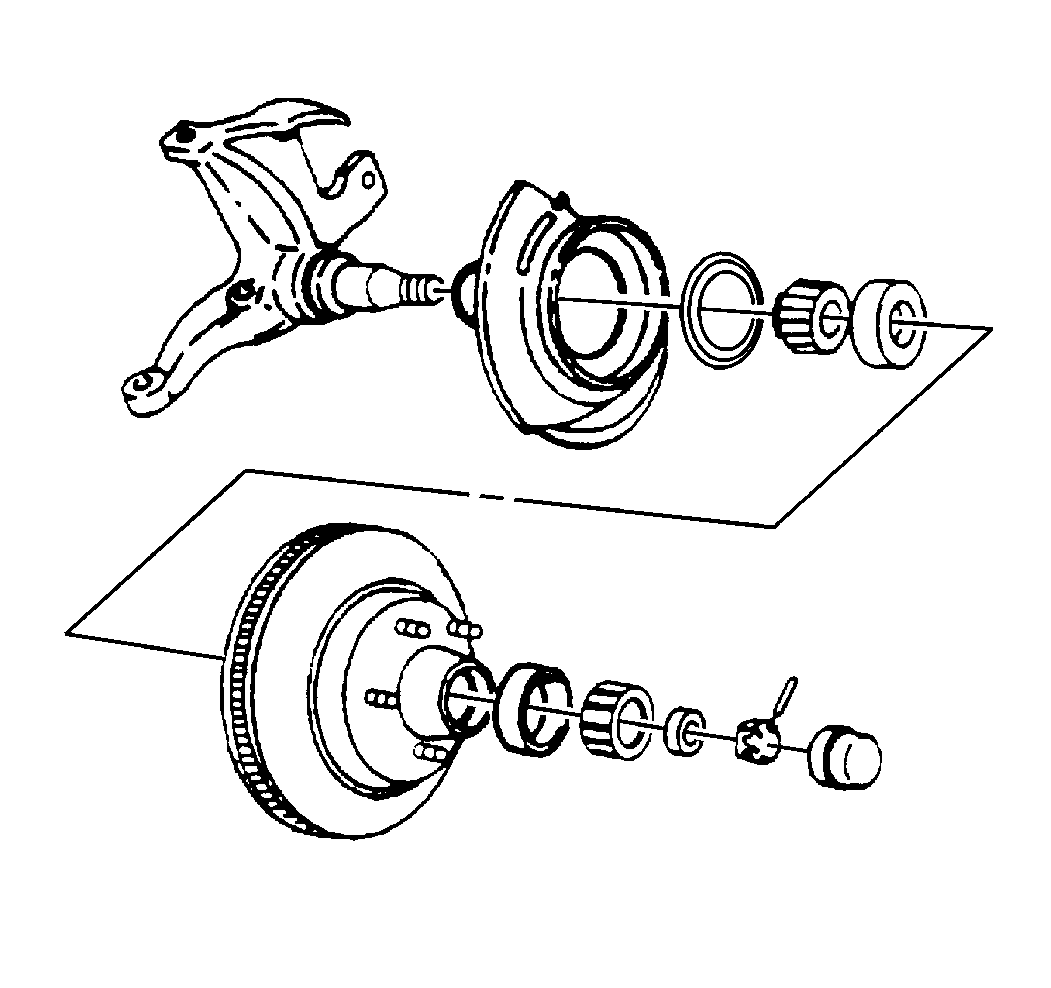
Important: Do not damage the outer bearing and the spindle threads.
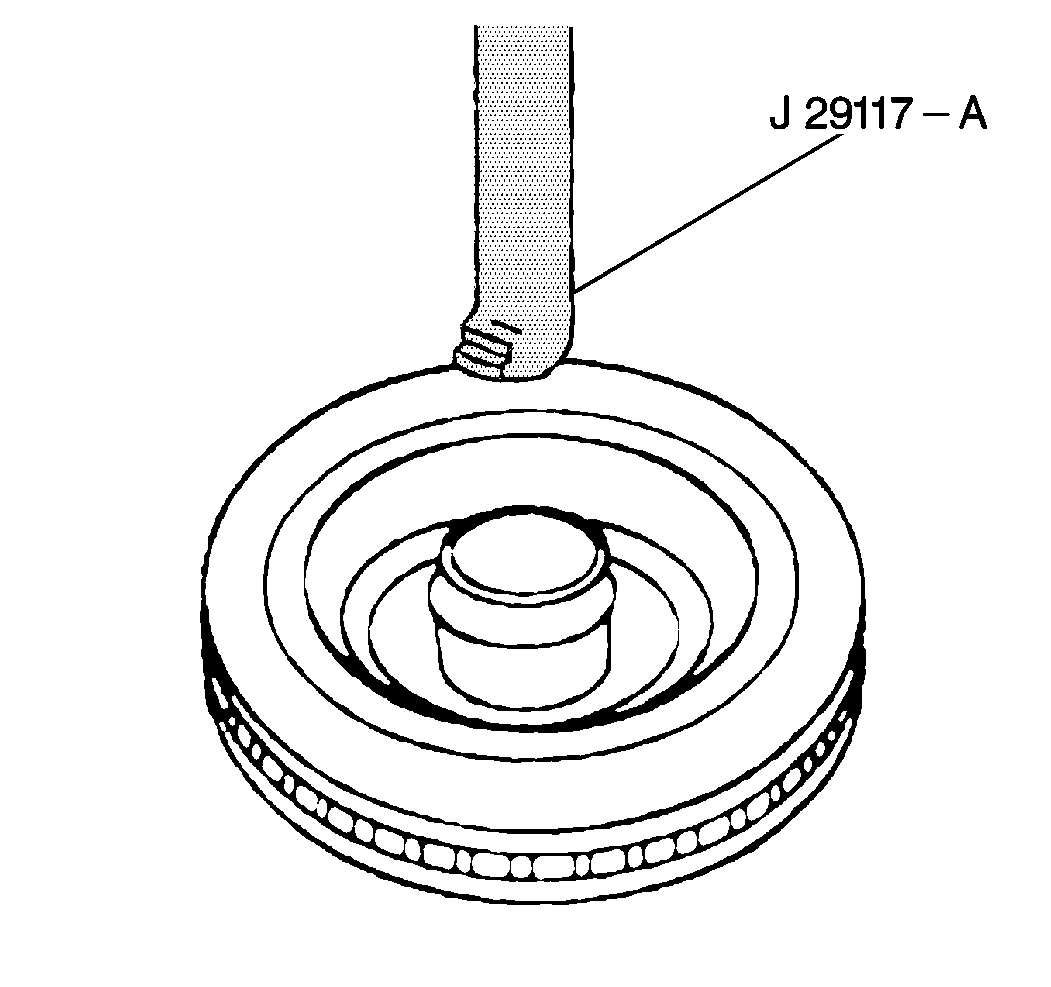
Installation Procedure
Important:
• Apply an approved high-temperature front wheel bearing grease
to the spindle at the inner and outer bearing seat, the shoulder, and the
seal seat. • Also, finger apply a small amount of grease inboard of each bearing
cup in the rotor. • Pressure pack the bearings with a grease machine, or hand pack
the bearings. Make sure the grease is worked thoroughly into the rollers,
the cone, and the cage.
- Install the inner bearing to the rotor.
- Apply an additional quantity of grease outboard of the inner bearing.
- Install the seal.
- Install the rotor to the spindle.
- Install the outer bearing to the rotor.
- Install the washer.
- Install the nut.
- Tighten the nut to 16 N·m (12 lb ft), while turning the wheel assembly forward by hand.
- Apply grease to the outboard side of the outer bearing.
- Install the brake caliper. Refer to Brake Caliper Replacement in Disc Brakes.
- Lower the vehicle.

| 3.1. | Lubricate the seal lip. |
| 3.2. | Use a flat plate in order to press the seal down flush with the hub. |
| 3.3. | Seat the outer bearing and the cup. |
Important: Do not scuff the spindle threads.
Important: Adjust the wheel bearings. Refer to Wheel Bearing Adjustment .
Notice: Use the correct fastener in the correct location. Replacement fasteners must be the correct part number for that application. Fasteners requiring replacement or fasteners requiring the use of thread locking compound or sealant are identified in the service procedure. Do not use paints, lubricants, or corrosion inhibitors on fasteners or fastener joint surfaces unless specified. These coatings affect fastener torque and joint clamping force and may damage the fastener. Use the correct tightening sequence and specifications when installing fasteners in order to avoid damage to parts and systems.
Tighten
Front Wheel Hub, Bearing, and Seal Replacement S4WD
Removal Procedure
Tools Required
| • | J 24319-B Tie Rod End Puller |
| • | J 36607 Ball Joint Separator |
- Raise the vehicle. Support the vehicle with safety stands.
- Unload the torsion bar. Refer to Torsion Bar and Support Assembly Replacement .
- Remove the tire and the wheel. Refer to Wheel Removal i Tires and Wheels.
- Remove the drive axle nut.
- Insert a drift or a large screwdriver through the brake caliper and into the rotor vanes. This prevents the rotor from turning.
- Remove the washer.
- Remove the brake caliper. Refer to Brake Caliper Replacement in Disc Brakes.
- Remove the hub and bearing assembly from the axle joint splined shaft.
- Remove the rotor. Refer to Brake Rotor Replacement in Disc Brakes.
- Remove the bolts.
- Remove the splash shield.
- Remove the cotter pin.
- Remove the nut.
- Remove the tie rod end from the knuckle using the J 24319-B .
- Remove the cotter pins.
- Remove the ball joints from the knuckle using the J 36607 . Locate the J 36607 on the ball stud. Back off the nut until the ball stud is forced out of the knuckle.
- Remove the nuts.
- Remove the knuckle from the ball joints.
- Remove the spacer from the knuckle.
- Remove the seal from the knuckle.
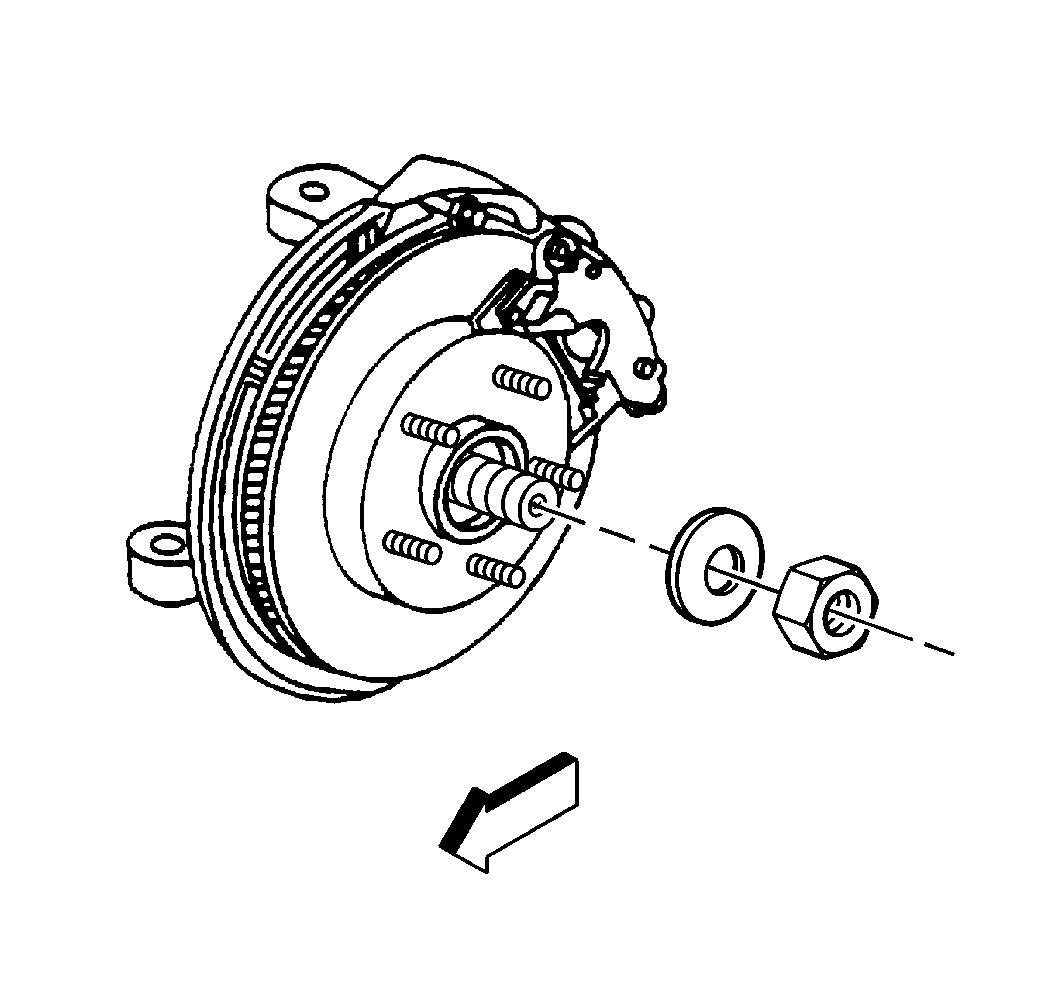
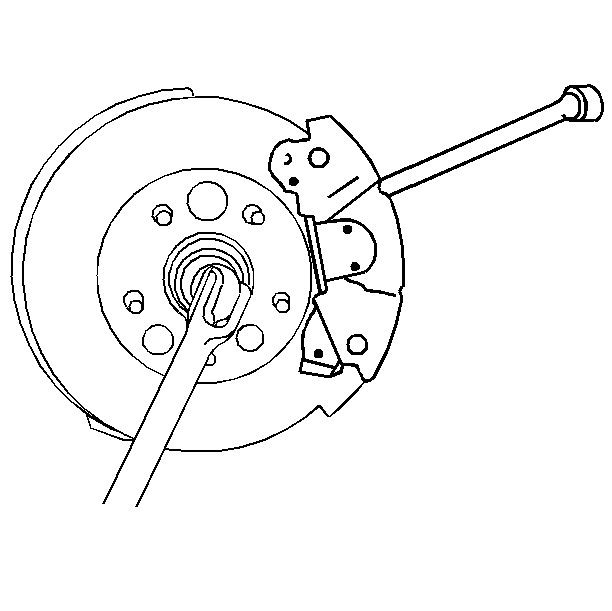
Notice: Support the caliper with a piece of wire to prevent damage to the brake line.
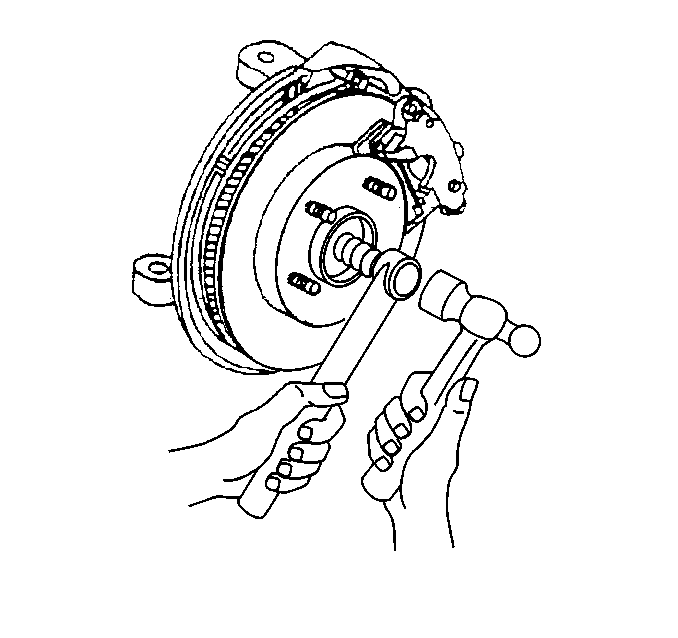
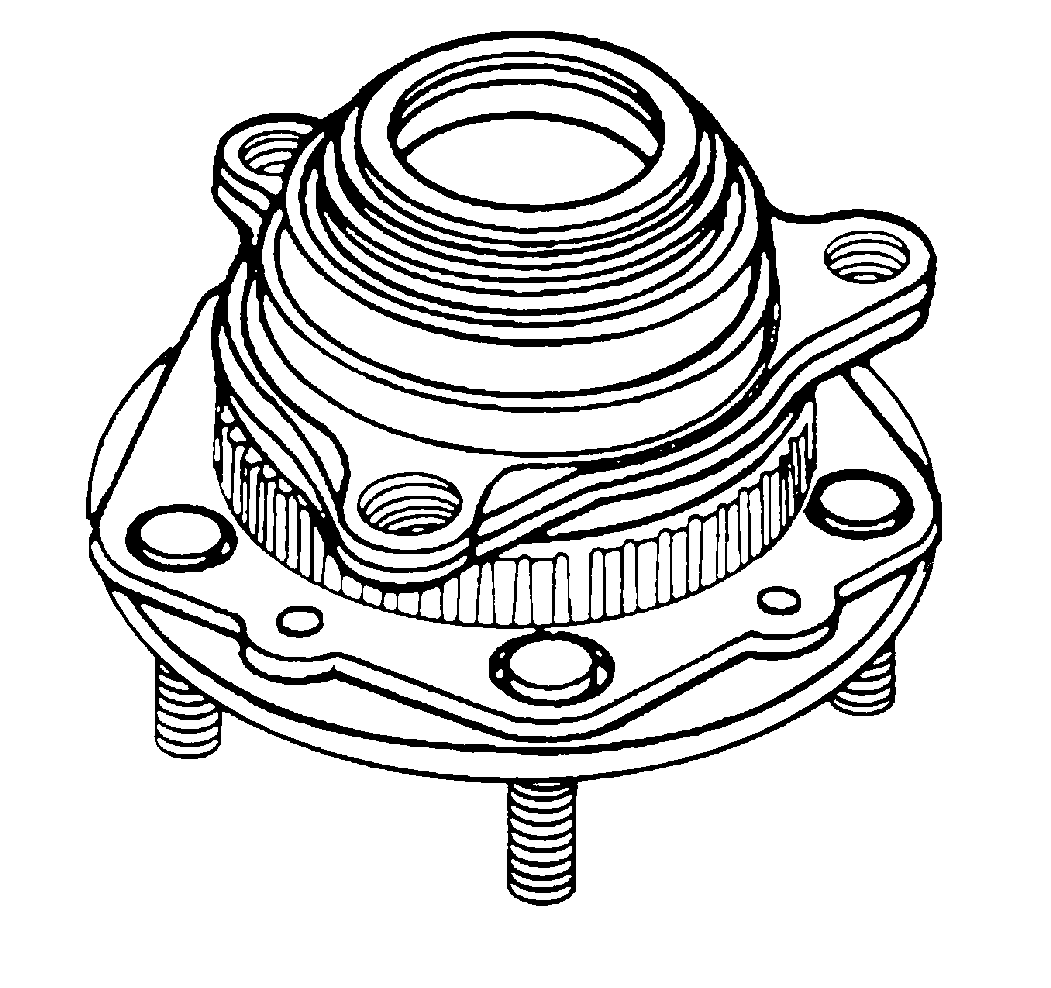
Important: Lay the hub and bearing assembly on the hub bolt on the outboard side. This prevents damage or contamination to the bearing seal.
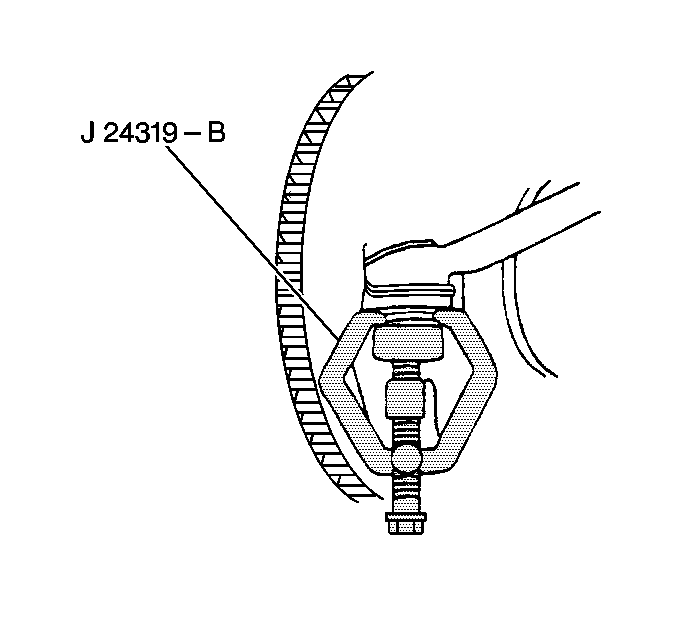
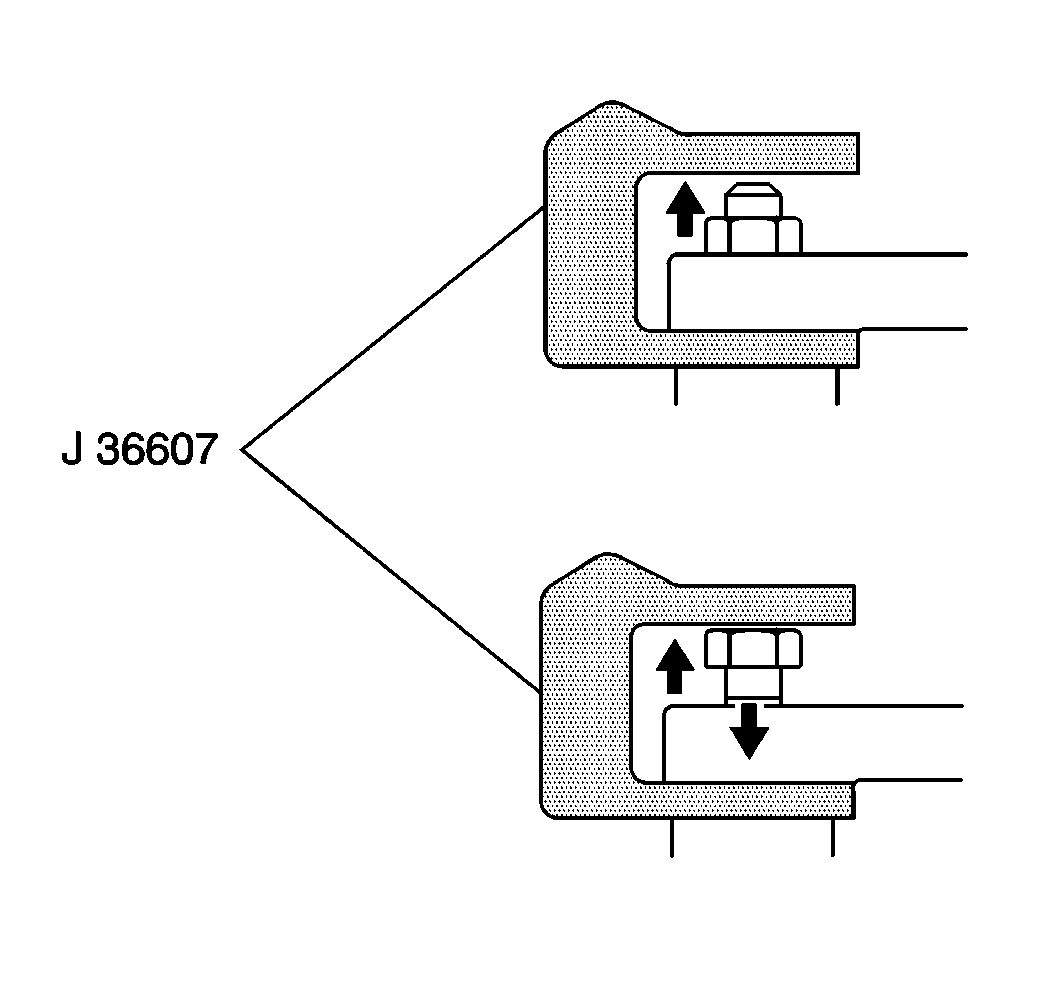
Installation Procedure
Tools Required
J 28574 Steering Knuckle Seal Installer
- Install the new seal to the knuckle using the J 28574 .
- Install the spacer to the knuckle.
- Install the knuckle to the upper and lower ball joints.
- Install the nuts.
- Install new cotter pins. Bend the pin ends against the nut flats.
- Install the splash shield. Align the shield to the knuckle.
- Install the hub and bearing assembly. Align the threaded holes.
- Install the bolts.
- Install the tie rod end to the knuckle.
- Install the nut.
- Install a new cotter pin. Bend the pin ends against the nut flats.
- Install the rotor. Refer to Brake Rotor Replacement in Disc Brakes.
- Install the brake caliper. Refer to Brake Caliper Replacement in Disc Brakes.
- Install the washer.
- Install the nut.
- Insert a drift or a large screwdriver through the brake caliper into the rotor vanes. This prevents the rotor from turning.
- Install the tire and the wheel. Refer to Wheel Installation in Tires and Wheels.
- Lower the vehicle.
- Apply the brake pedal.
- Check the vehicle trim height. Align the front wheels. Refer to Wheel Alignment Specifications in Wheel Alignment.
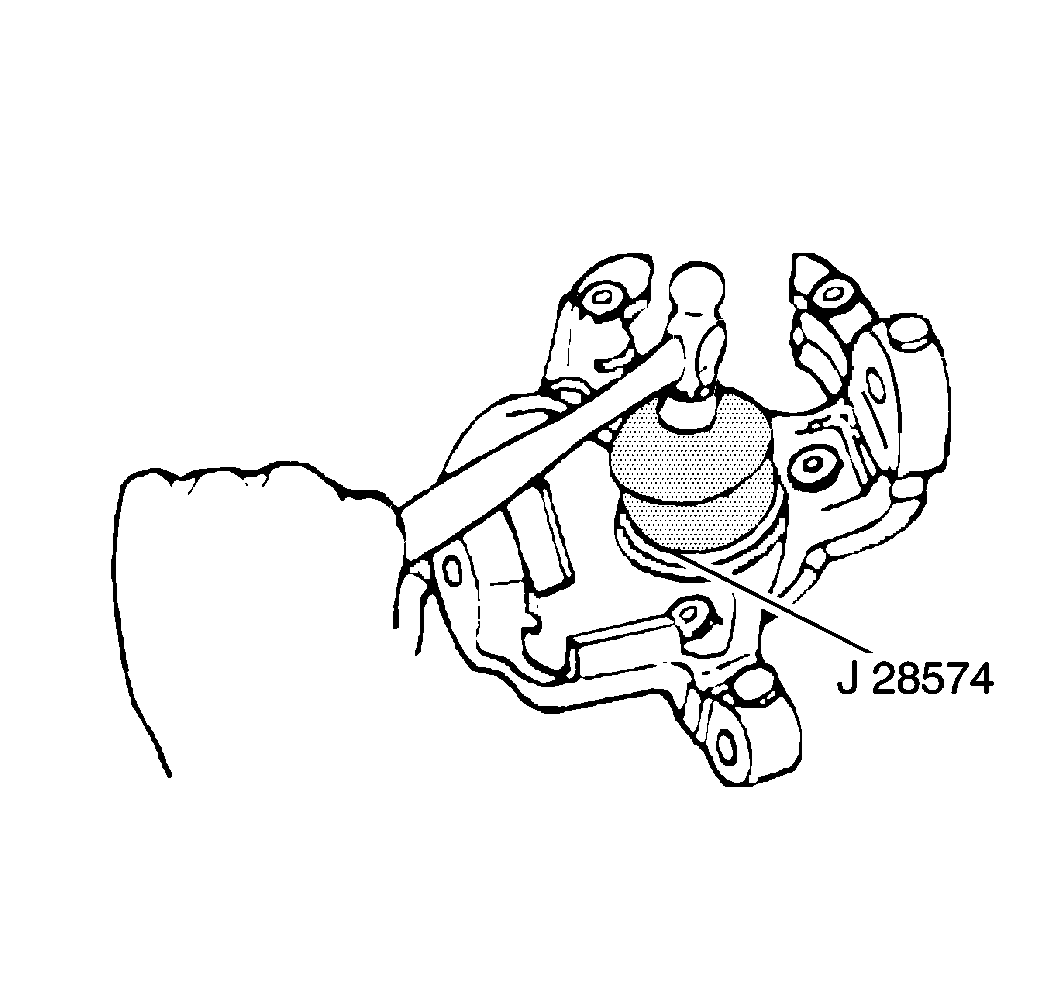
Notice: Use the correct fastener in the correct location. Replacement fasteners must be the correct part number for that application. Fasteners requiring replacement or fasteners requiring the use of thread locking compound or sealant are identified in the service procedure. Do not use paints, lubricants, or corrosion inhibitors on fasteners or fastener joint surfaces unless specified. These coatings affect fastener torque and joint clamping force and may damage the fastener. Use the correct tightening sequence and specifications when installing fasteners in order to avoid damage to parts and systems.
Tighten
| • | Tighten the nuts to align the cotter pin. Do not tighten the nuts more than 1/6 turn. |
| • | Tighten the upper nut to 83 N·m (61 lb ft). |
| • | Tighten the lower nut to 108 N·m (79 lb ft). |
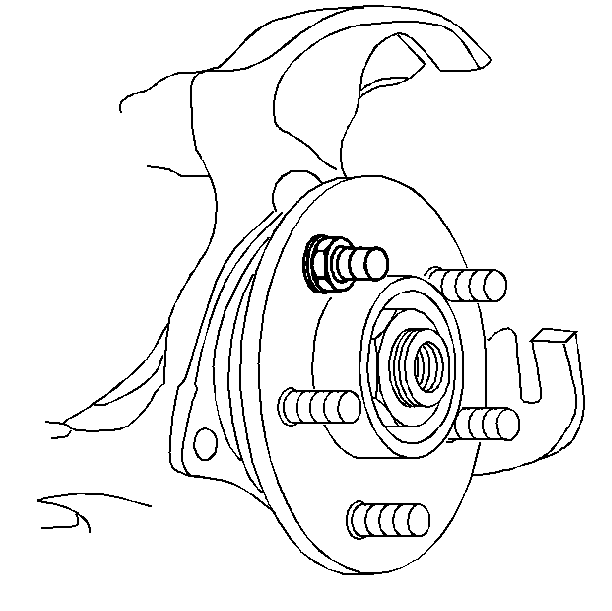
Notice: Use the correct fastener in the correct location. Replacement fasteners must be the correct part number for that application. Fasteners requiring replacement or fasteners requiring the use of thread locking compound or sealant are identified in the service procedure. Do not use paints, lubricants, or corrosion inhibitors on fasteners or fastener joint surfaces unless specified. These coatings affect fastener torque and joint clamping force and may damage the fastener. Use the correct tightening sequence and specifications when installing fasteners in order to avoid damage to parts and systems.
Tighten
Tighten the bolts to 105 N·m (77 lb ft).
Notice: Use the correct fastener in the correct location. Replacement fasteners must be the correct part number for that application. Fasteners requiring replacement or fasteners requiring the use of thread locking compound or sealant are identified in the service procedure. Do not use paints, lubricants, or corrosion inhibitors on fasteners or fastener joint surfaces unless specified. These coatings affect fastener torque and joint clamping force and may damage the fastener. Use the correct tightening sequence and specifications when installing fasteners in order to avoid damage to parts and systems.
Tighten
Tighten the nut to 53 N·m (39 lb ft).

Notice: Use the correct fastener in the correct location. Replacement fasteners must be the correct part number for that application. Fasteners requiring replacement or fasteners requiring the use of thread locking compound or sealant are identified in the service procedure. Do not use paints, lubricants, or corrosion inhibitors on fasteners or fastener joint surfaces unless specified. These coatings affect fastener torque and joint clamping force and may damage the fastener. Use the correct tightening sequence and specifications when installing fasteners in order to avoid damage to parts and systems.
Tighten
Tighten the drive axle nut to 140 N·m (103 lb ft).
